I received the XTAR PB2S for the review by XTAR.
The PB2S is a 2 slot battery charger with power bank with power bank functionality QC3.0 (5V 2A or 9V 2A, max power 18W).
The supported batteries are: Li-Ion 3.6 – 3.7 Volt / IMR / INR / ICR; in the 18650-18700-20700 and 21700 format. Protected 18650 will also fit. It can reset triggered PCB circuits of batteries on both slots.
It is available in different colours, I got my sample in black.
I have almost no knowledge about electronic, however, I've been using flashlights, batteries and chargers for 10+ years as a consumer. So in this thread I'll give you my honest opinion on this product as a user.
In order to fully display the potential of the PB2S, along with it I received a Xtar 21700 4200mAh 45A battery, a 18650 2600mAh 35A battery, and a XTAR USB power source rated QC 3.0 .
The PB2S arrives in this nice box with a cut in to view the PB2S. The PB2S comes with a USB-USB type C cable, and a manual.
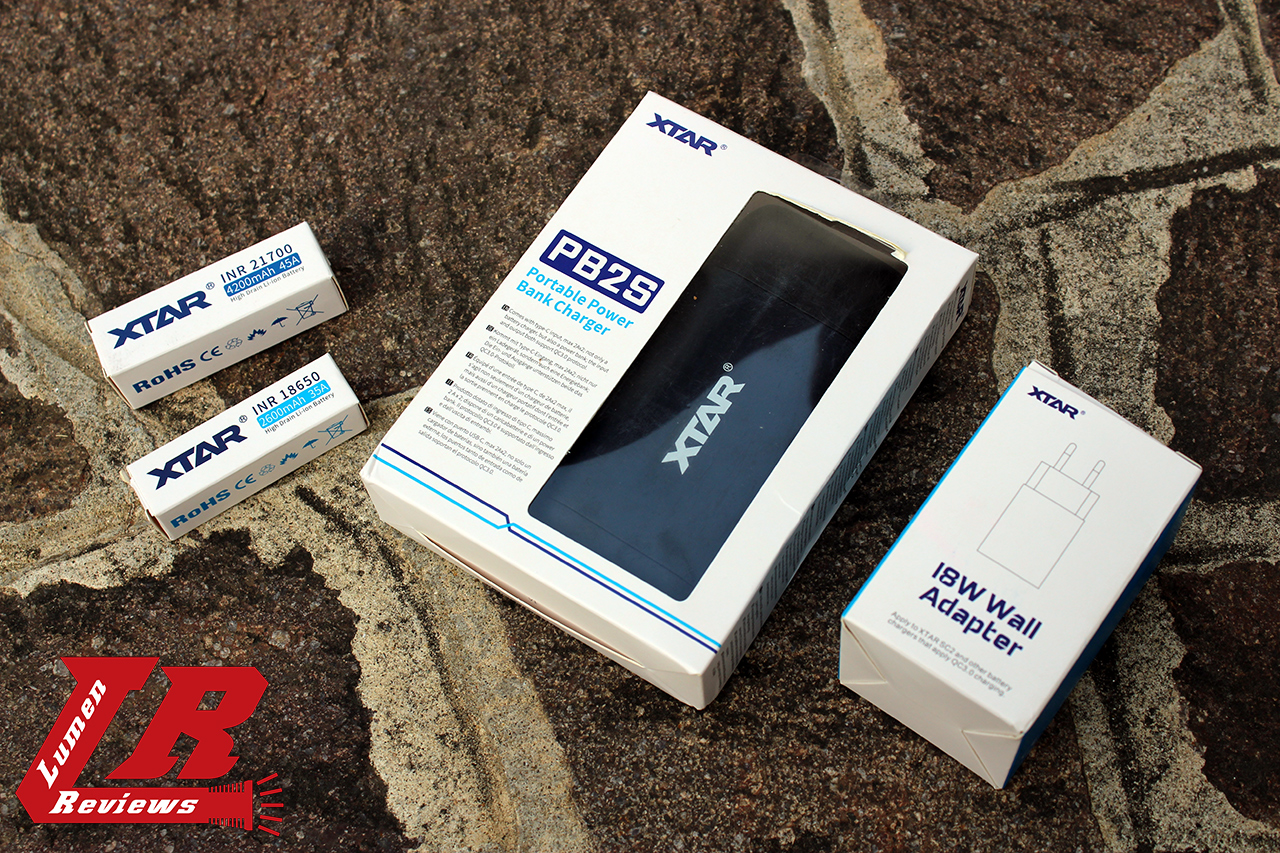
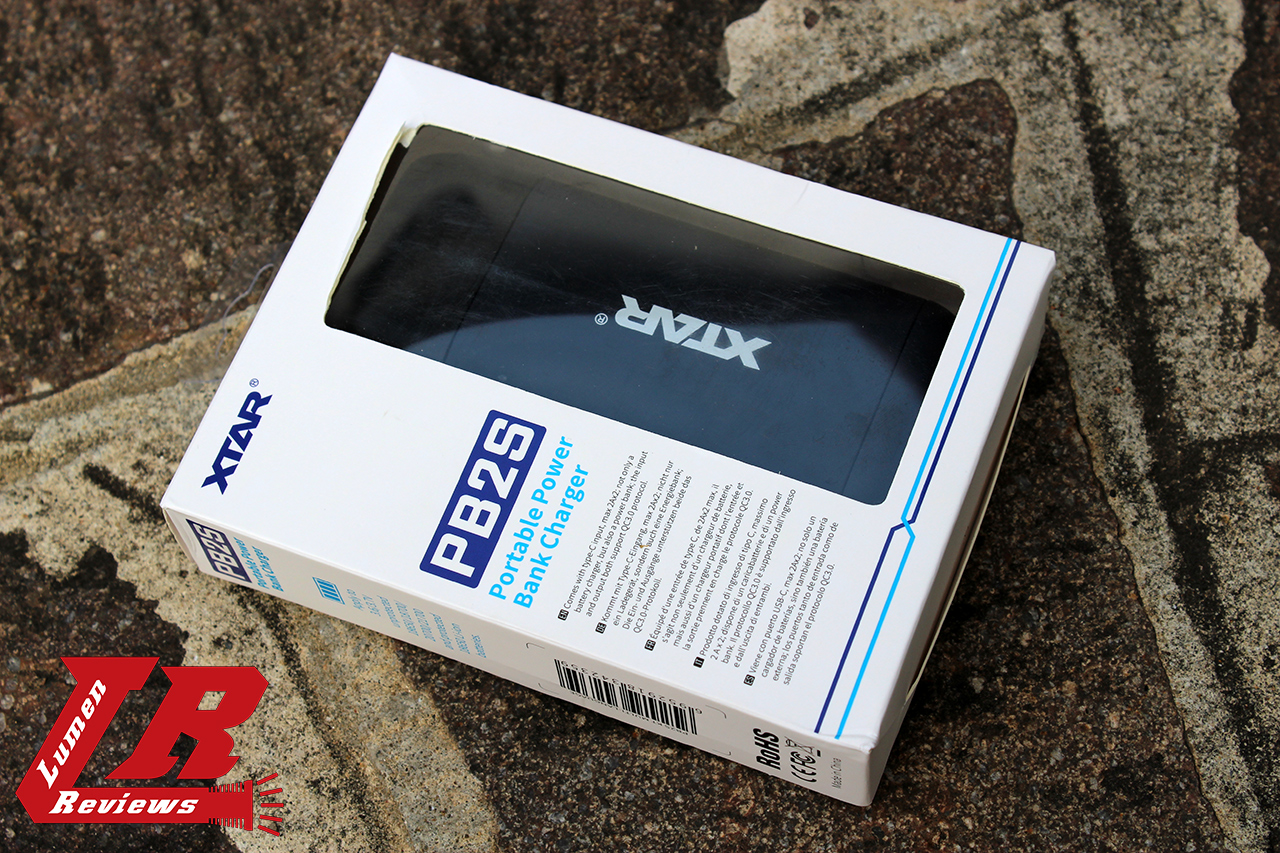
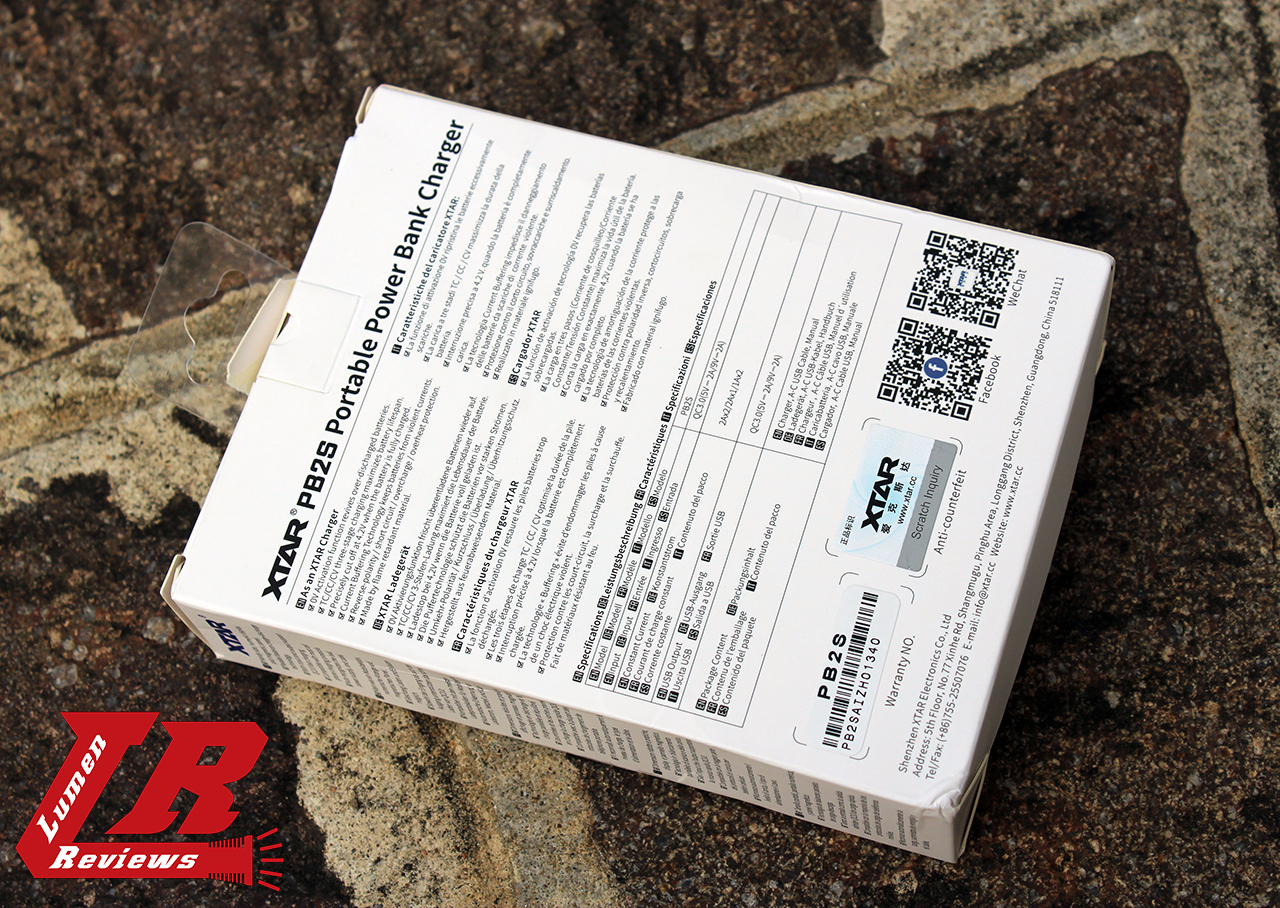
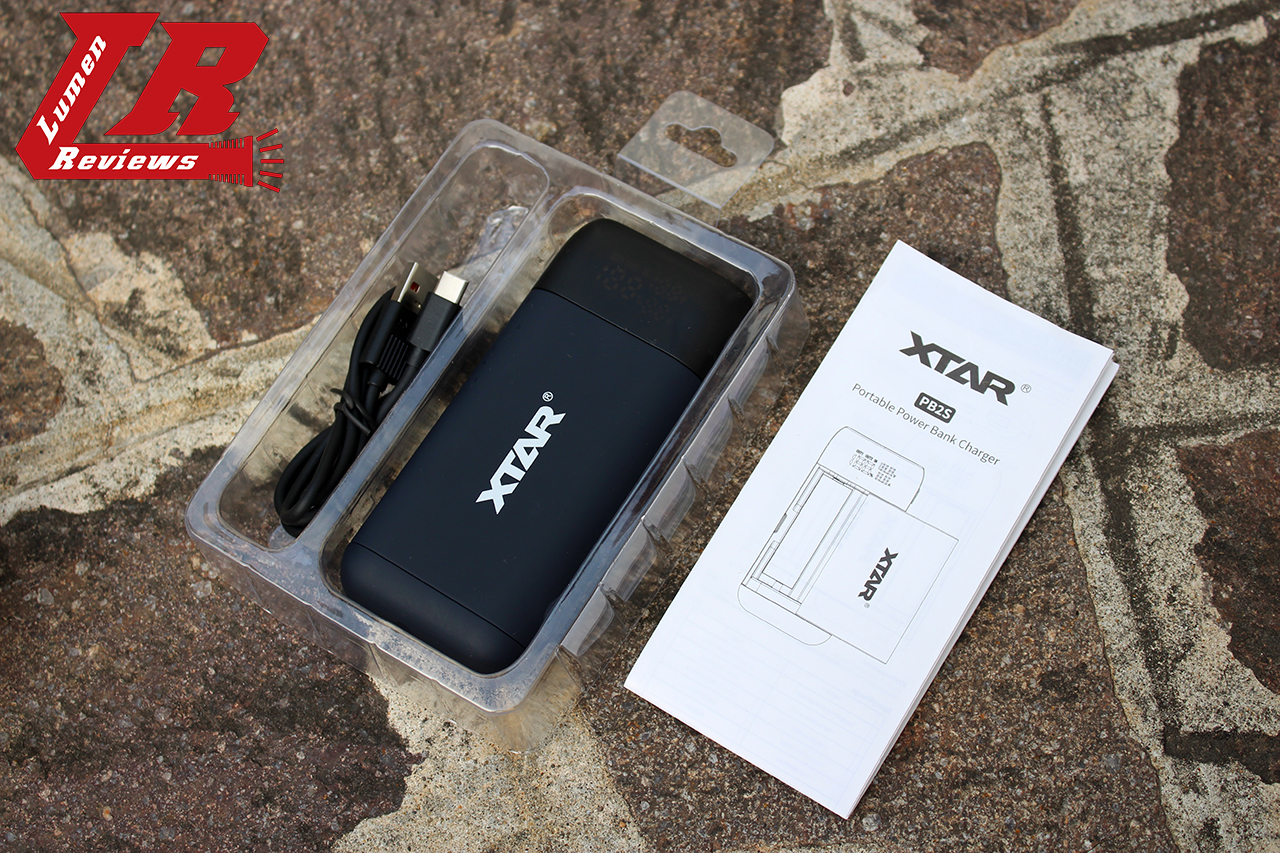
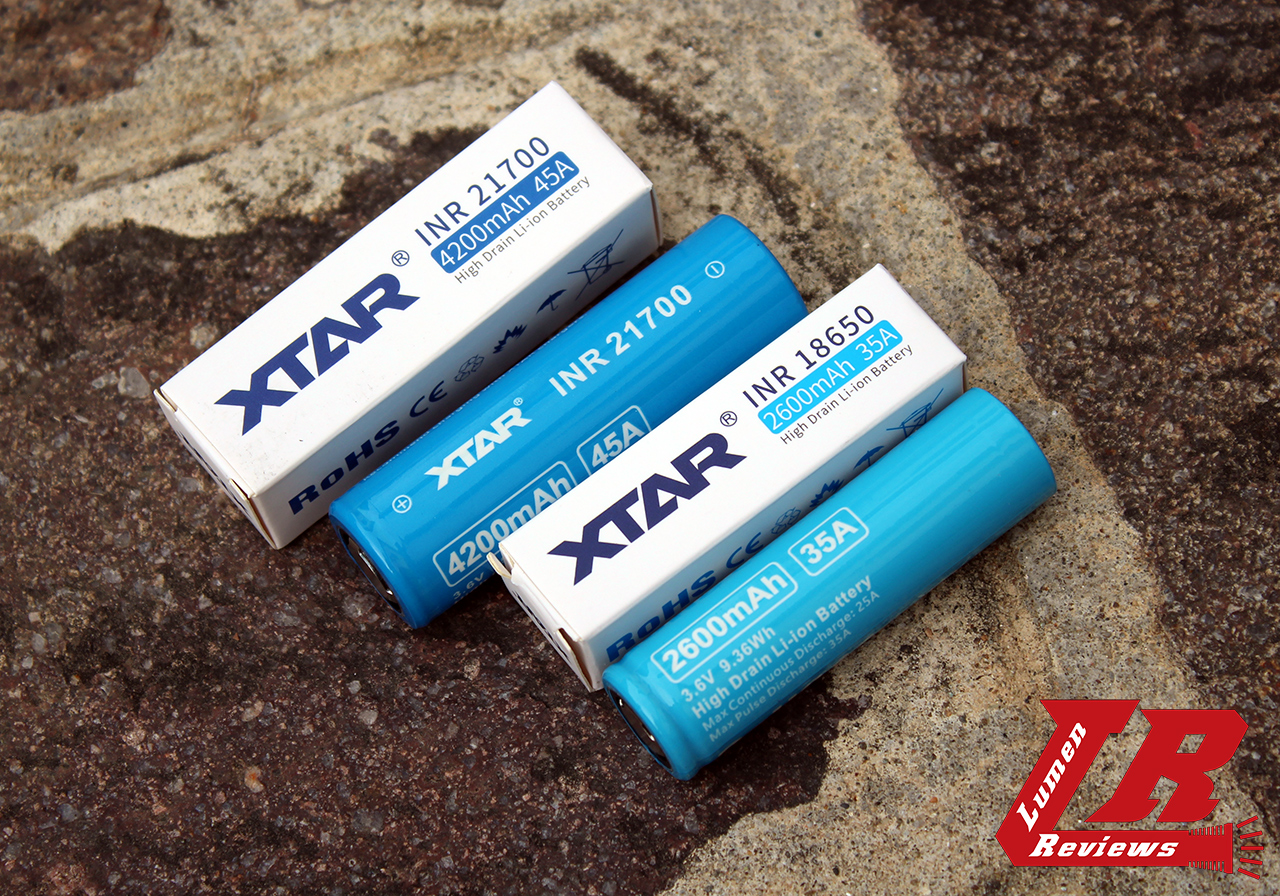
The PB2S measures 124 mm in length, 56 mm width and 26 mm thick. The entire surface is rubberised and allows a good grip on the PB2S.
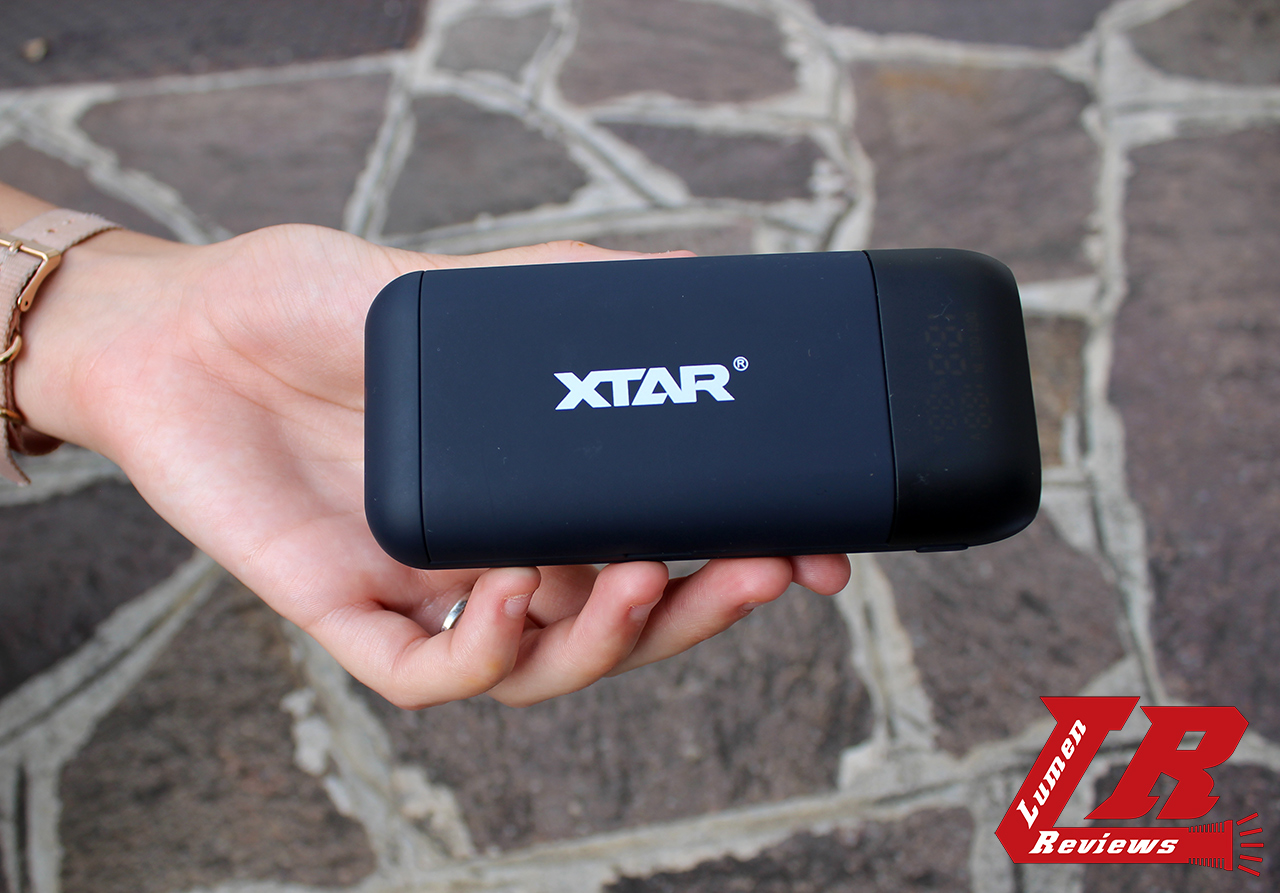
On the Front there is the removable tray cover, and the LCD backlit display.
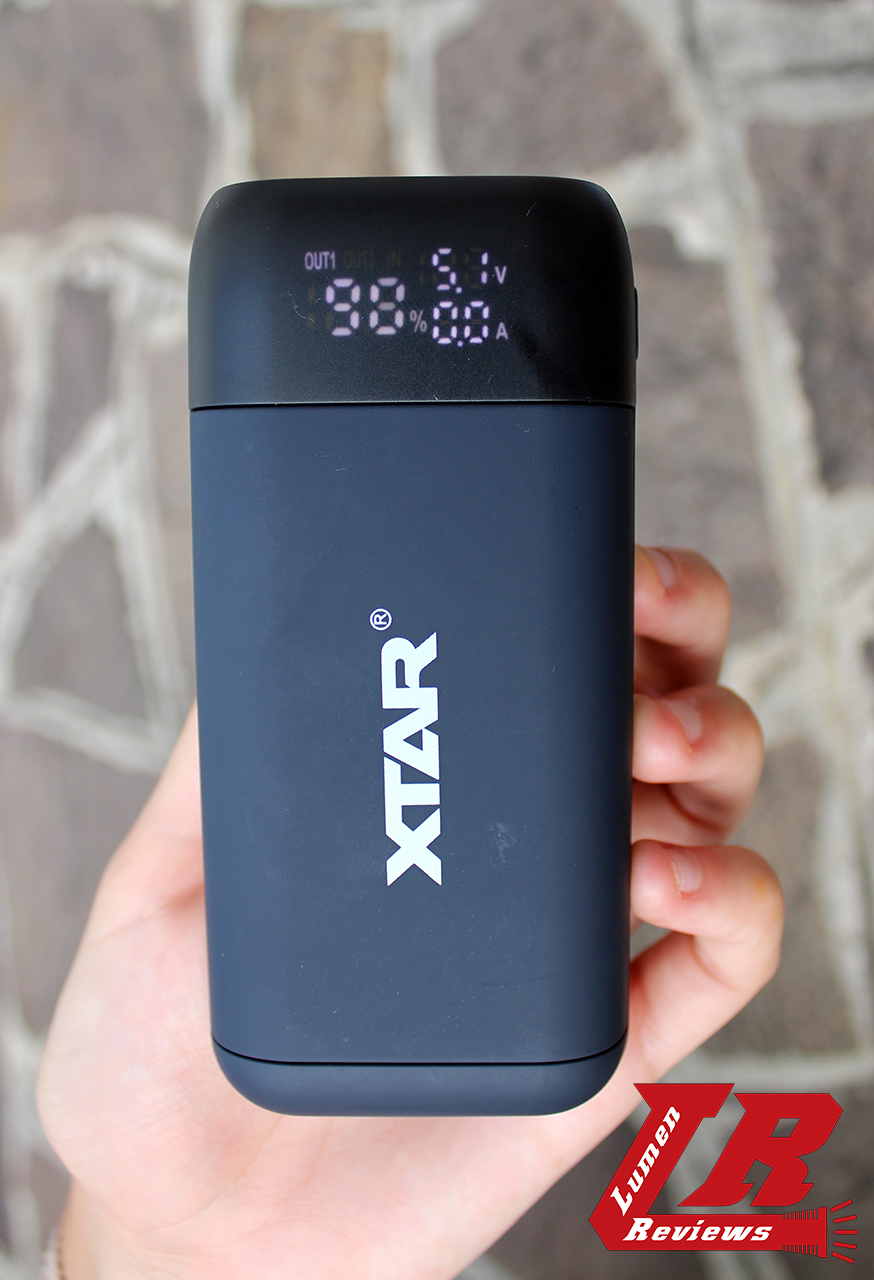
On the back there are the detailed specs (input, output, usb output, batteries compatible…).
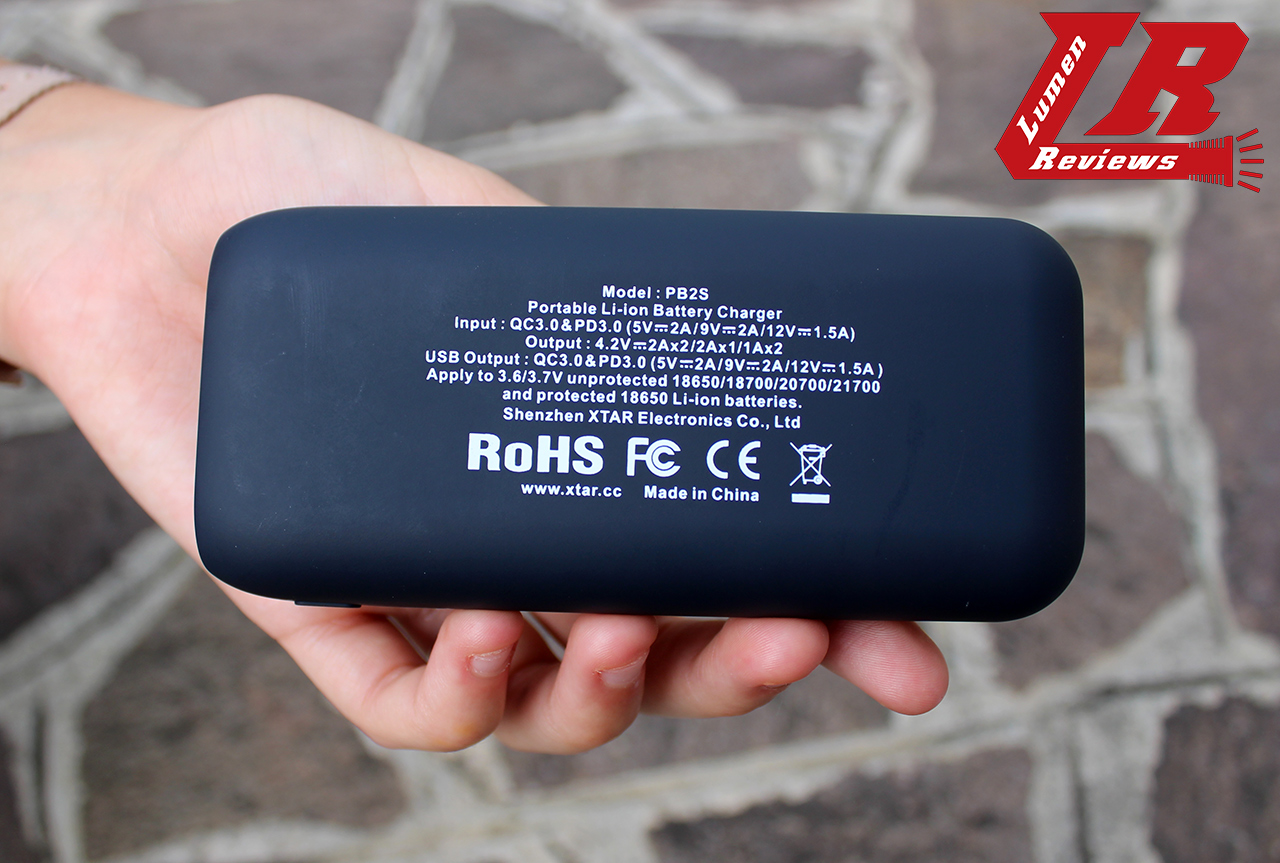
The USB output port, the USB-C input port and the switch are placed laterally.
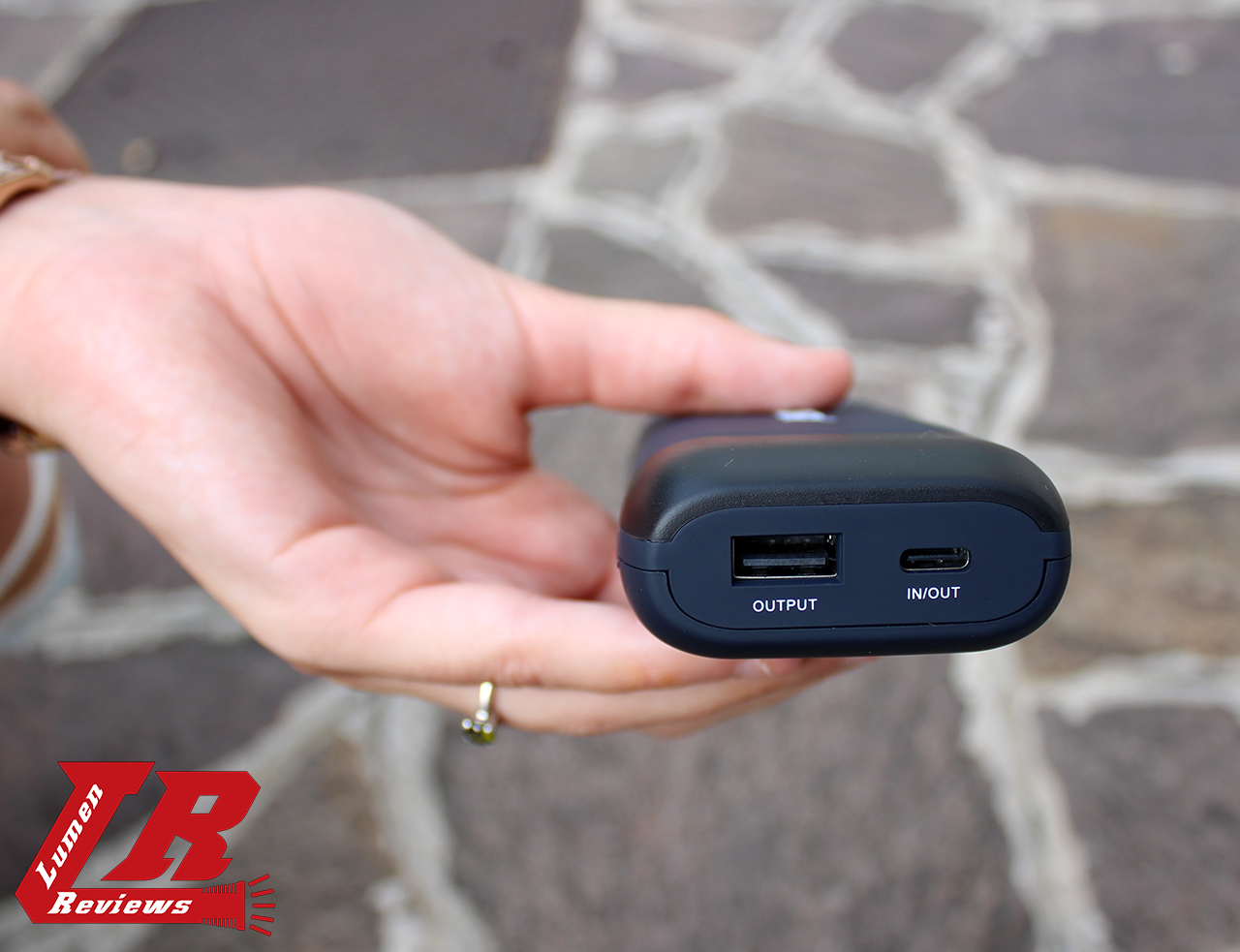
Let's open the tray by removing the magnetic cover (that works in both ways).
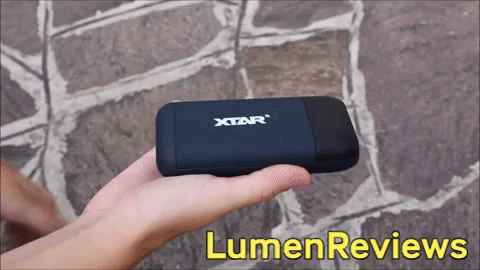
The 2 slots are so long that they can fit long protected 18650 and unprotected 21700 batteries without problems.
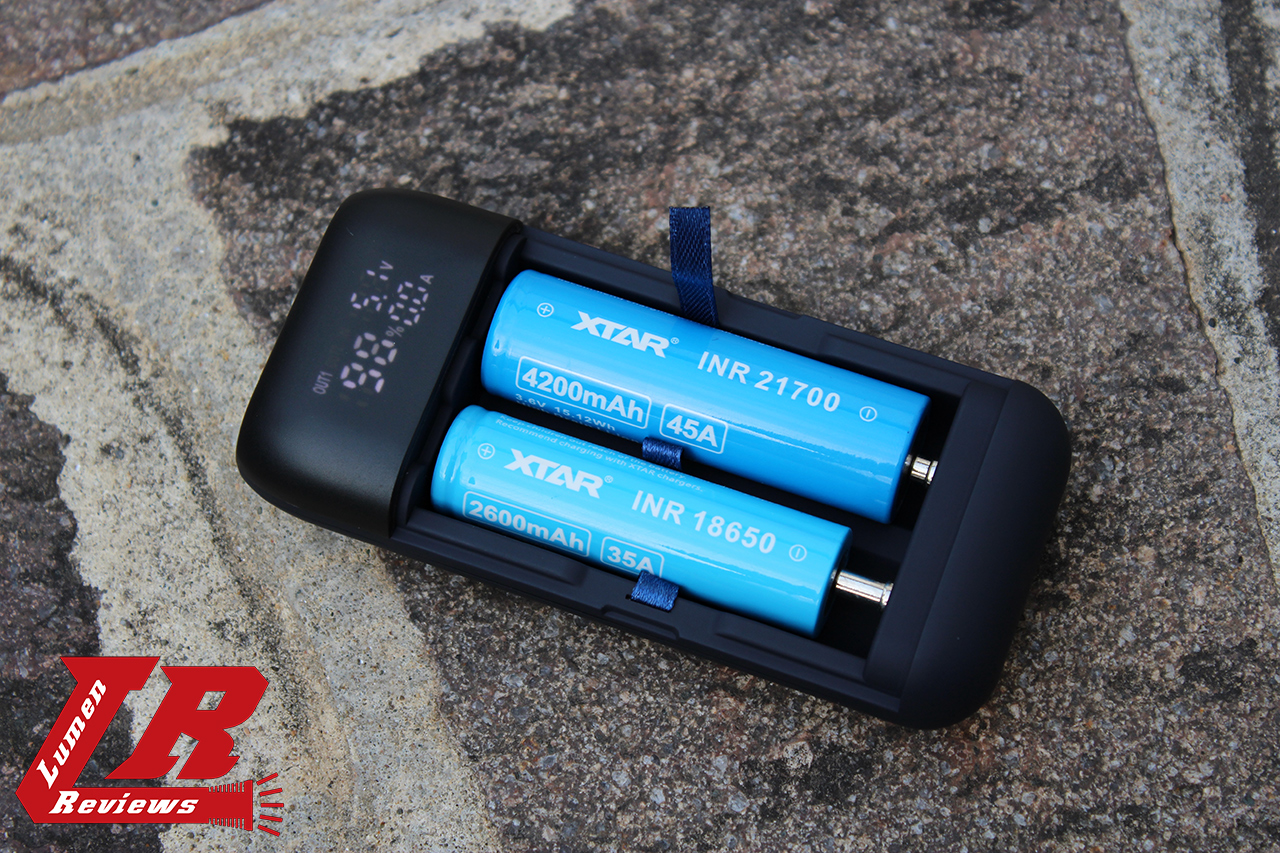
Fixed on one side of the charger there is a 11 cm long strap that can be used to extract the batteries effortlessly without tools.
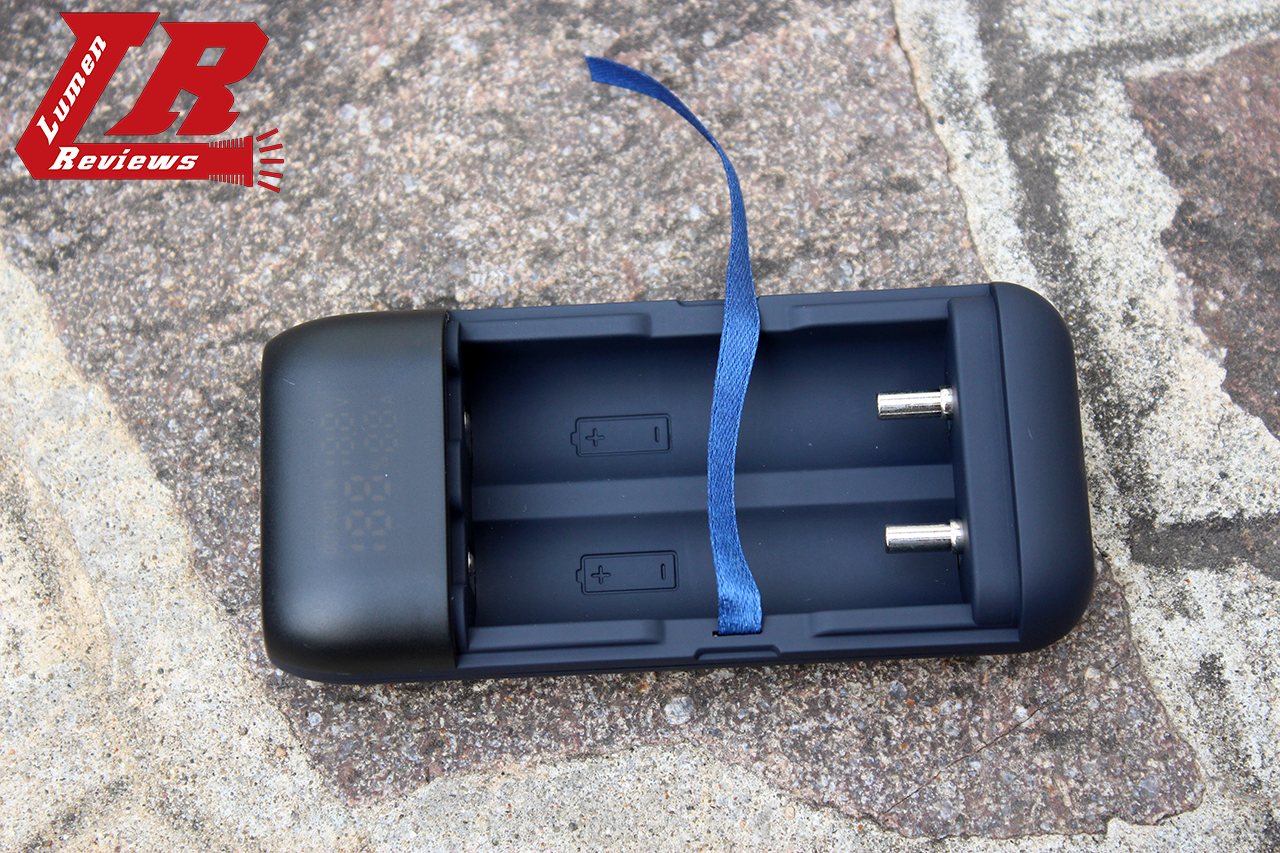
The positive contact point are raised dots (so flat top cells work) and the negative are spring covered by cylinders to provide the maximum contact area.
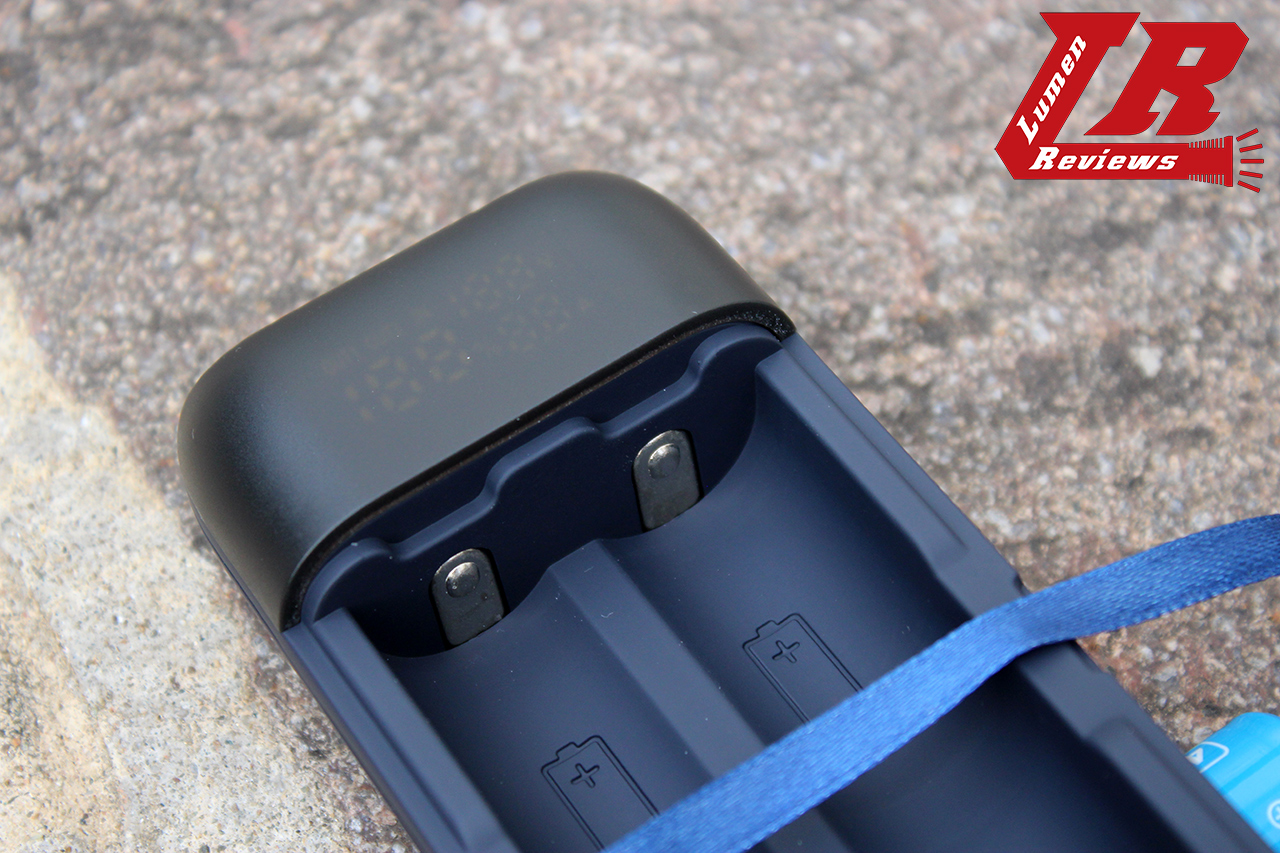
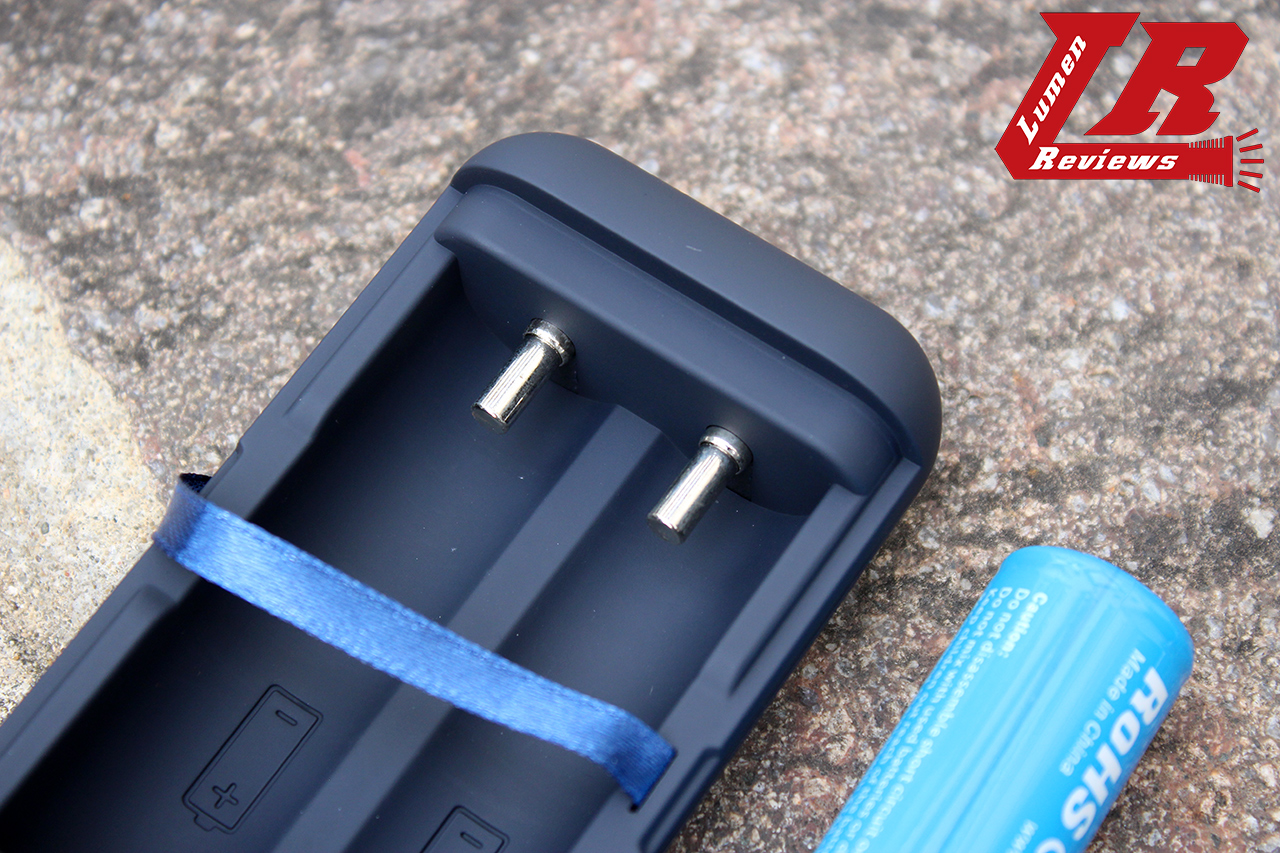
The display has big digits and being backlit, can be seen in the dark.
The display will show the input voltage, current, and battery capacity percentage.
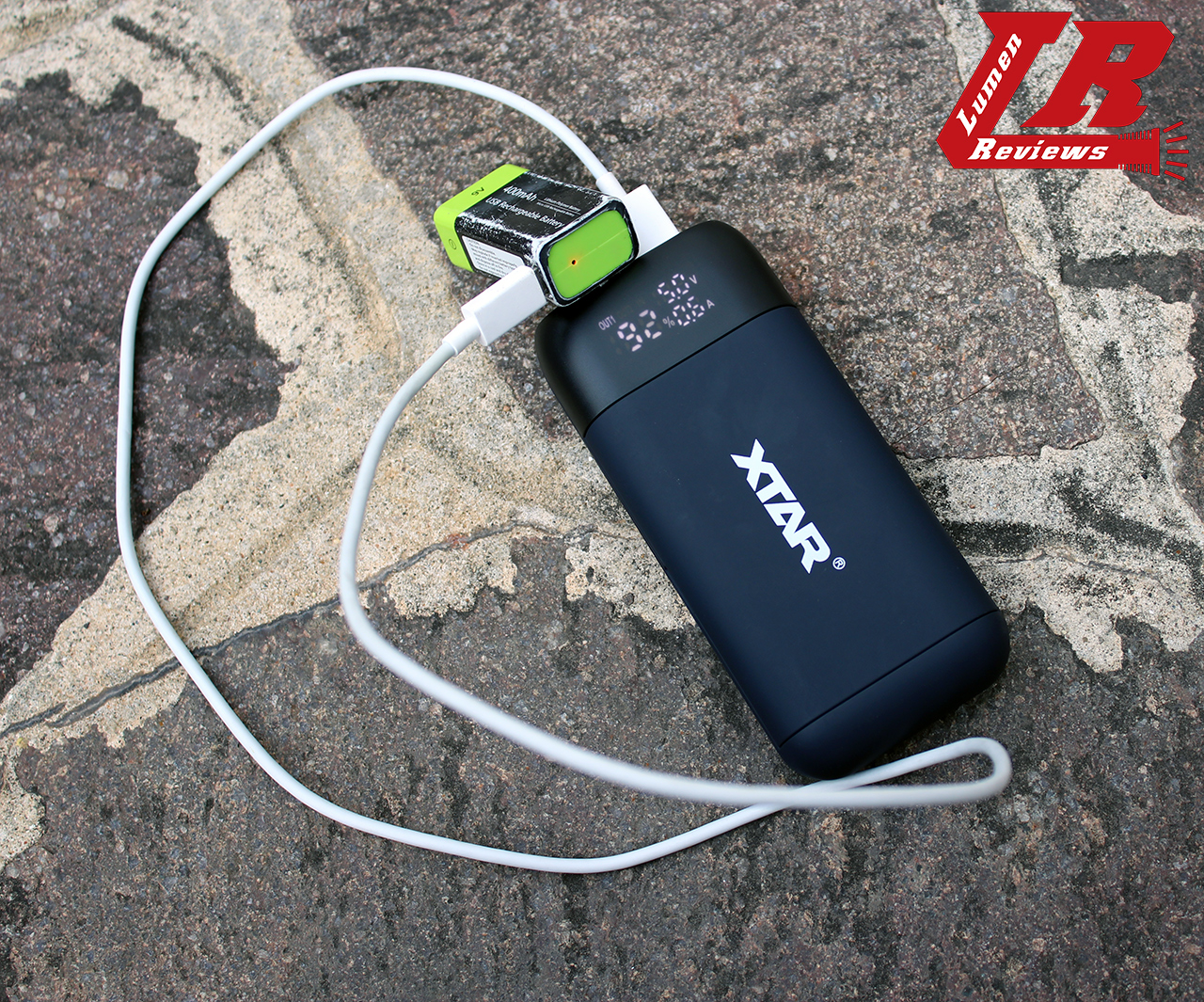
During my experience with the charger, the it did turn on and off in loop (flashing the information) while being charged and when charging a device. The same when charging the PB2S, even with a QC3.0 power supply. Only once the display stood on, and I could not replicate it.
When the batteries inside are completely discharged, no message appears on the display and you can't turn it on. You have to charge it to reactivate the display.
Sometimes the display would stay on (flashing the info) even after I disconnected the device I was charging with the PB2S.
Press the lateral switch to cycle between the average value (IN), and the value of each battery (B1 and B2).
The Display will show:
IN when charging,
OUT1 or OUT2 when discharging
%: power percentage of the batteries (if one battery is inserted it shows the percentage of the single cell, if two batteries are inserted, it shows the average percentage of both cells).
ER: error (battery wrongly inserted, or battery defected / not recognised).
As far as the input, the PB2S works with QC3.0 (5V 2A,9V 2A), and it can charge the inserted cells at 2A on each slot (2Ax2), 2A on one slot (2Ax1) or 1A on 2 slot (1Ax2).
When the cells inserted have different voltage, when charging (or discharging), the PB2S will start charging (or discharging) the one with the higher voltage, when they have the same voltage, they will be charged (or discharged) both at the same time.
If you want to keep the PB2S connected to a device but stop his output as a powerbank, just keep pressed the lateral button until the displays turns and stays off.
Here is the speed reading on my phone when charging it with the PB2S
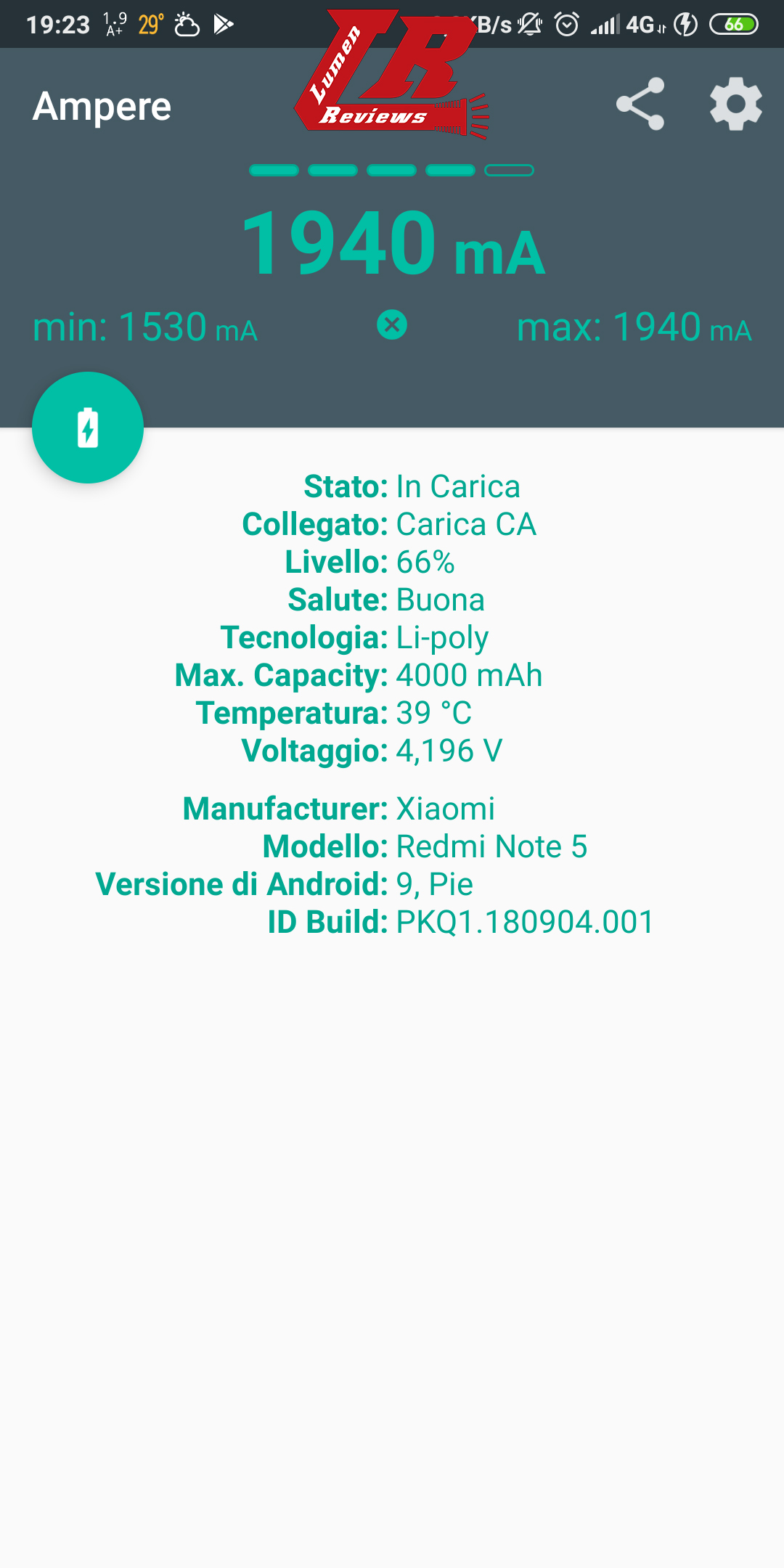
And here is a thermal pic of the phone being charged by the PB2S.
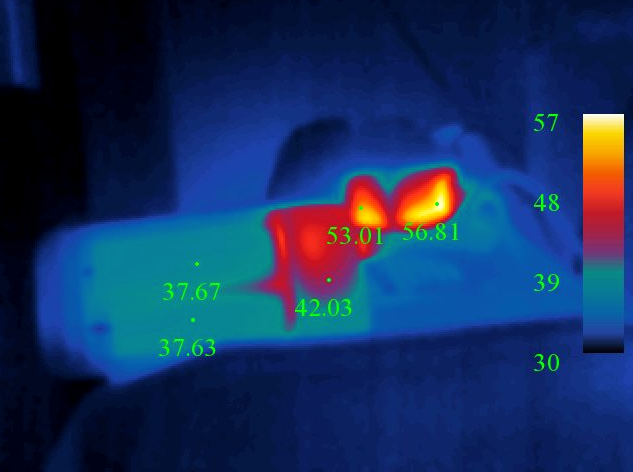
Here is a video of the PB2S being charged with the XTAR USB power supply with QC 3.0
My thoughts
The PB2S is well built and finished.
The magnetic tray cover works well staying in place protecting the tray and the cells from dust and accidental contacts when carrying the PB2S. The 2 slots are long enough to accommodate most cells.
The USB C / USB ports are universal and allow more current than the micro USB port, allowing for the fastest charge.
Charging the PB2S using a QC3.0 coded power adapter, a Ravpower Smart+ 2.0 charger, and other regular USB chargers without particular coding or rating, I had no problems.
Using the PB2S as a powerbank to charge my cellphone, and other equipment, worked fine even with a single cell.
The possibility to run the PB2S with different sizes of batteries, from the 18650 to the 21700 with 2 independent slots are a plus. Although I would advise a word of caution when putting in smaller cells that for capacity and or chemistry, can not support the 2A charge that could be delivered to them. Similarly, I would advise caution when powering the powerbank function with a single cell that for capacity and or chemistry, can not support the high continuous current discharge.
In my opinion, you can fully exploit the technical advantages of the PB2S if you run it with IMR or hybrid cells, so you can use the fast charging currents to fast charge them, and they can take the high and prolongated discharge current to sustain the highest charging current that the PB2S is able to sustain, especially when running the PB2S with a single cell.
Using quality USB C cable (with the right coding) is also a must, to avoid additional bottlenecks that can diminish the overall performance of the PB2S.
Keep in mind that. Although the % indicated for the single battery is a more or less accurate indication of the capacity remaining for that battery, the average % could not reflect the real capacity remaining in the PB2S if you use 2 batteries with different capacity, because the % estimate is done measuring the voltage of the cell.
For example, carrying an almost empty (10%) 2000mAh 18650 cell, and a full (100%) 4200mAh 21700 battery, will give you an average remaining capacity of around 55%, when in reality you have around 70%.
The other way around: a fully charged 2000mAh 18650 and a almost empty 4200mah 21700 will give you the same average remaining capacity of 55%, when in reality you have around 40%.
This issue can be minimised or nullified if the batteries used in the PB2S have small to none difference in capacity.
The only issue that I have with the PB2S is that when the display doesn't stay on constantly, but it turns on and off, and stays on every time for around 1 second. That is not enough for me to grasp all the informations (current, voltage, %) in a single cycle, I have to wait for the display to turn on again to read the rest of the informations. Same for the display remaining active, flashing, even when I disconnect the device I was charging.
Thanks to: AntoLed, Won, Zampa.
The PB2S is a 2 slot battery charger with power bank with power bank functionality QC3.0 (5V 2A or 9V 2A, max power 18W).
The supported batteries are: Li-Ion 3.6 – 3.7 Volt / IMR / INR / ICR; in the 18650-18700-20700 and 21700 format. Protected 18650 will also fit. It can reset triggered PCB circuits of batteries on both slots.
It is available in different colours, I got my sample in black.
I have almost no knowledge about electronic, however, I've been using flashlights, batteries and chargers for 10+ years as a consumer. So in this thread I'll give you my honest opinion on this product as a user.
In order to fully display the potential of the PB2S, along with it I received a Xtar 21700 4200mAh 45A battery, a 18650 2600mAh 35A battery, and a XTAR USB power source rated QC 3.0 .
The PB2S arrives in this nice box with a cut in to view the PB2S. The PB2S comes with a USB-USB type C cable, and a manual.





The PB2S measures 124 mm in length, 56 mm width and 26 mm thick. The entire surface is rubberised and allows a good grip on the PB2S.

On the Front there is the removable tray cover, and the LCD backlit display.

On the back there are the detailed specs (input, output, usb output, batteries compatible…).

The USB output port, the USB-C input port and the switch are placed laterally.

Let's open the tray by removing the magnetic cover (that works in both ways).

The 2 slots are so long that they can fit long protected 18650 and unprotected 21700 batteries without problems.

Fixed on one side of the charger there is a 11 cm long strap that can be used to extract the batteries effortlessly without tools.

The positive contact point are raised dots (so flat top cells work) and the negative are spring covered by cylinders to provide the maximum contact area.


The display has big digits and being backlit, can be seen in the dark.
The display will show the input voltage, current, and battery capacity percentage.

During my experience with the charger, the it did turn on and off in loop (flashing the information) while being charged and when charging a device. The same when charging the PB2S, even with a QC3.0 power supply. Only once the display stood on, and I could not replicate it.
When the batteries inside are completely discharged, no message appears on the display and you can't turn it on. You have to charge it to reactivate the display.
Sometimes the display would stay on (flashing the info) even after I disconnected the device I was charging with the PB2S.
Press the lateral switch to cycle between the average value (IN), and the value of each battery (B1 and B2).
The Display will show:
IN when charging,
OUT1 or OUT2 when discharging
%: power percentage of the batteries (if one battery is inserted it shows the percentage of the single cell, if two batteries are inserted, it shows the average percentage of both cells).
ER: error (battery wrongly inserted, or battery defected / not recognised).
As far as the input, the PB2S works with QC3.0 (5V 2A,9V 2A), and it can charge the inserted cells at 2A on each slot (2Ax2), 2A on one slot (2Ax1) or 1A on 2 slot (1Ax2).
When the cells inserted have different voltage, when charging (or discharging), the PB2S will start charging (or discharging) the one with the higher voltage, when they have the same voltage, they will be charged (or discharged) both at the same time.
If you want to keep the PB2S connected to a device but stop his output as a powerbank, just keep pressed the lateral button until the displays turns and stays off.
Here is the speed reading on my phone when charging it with the PB2S

And here is a thermal pic of the phone being charged by the PB2S.

Here is a video of the PB2S being charged with the XTAR USB power supply with QC 3.0
My thoughts
The PB2S is well built and finished.
The magnetic tray cover works well staying in place protecting the tray and the cells from dust and accidental contacts when carrying the PB2S. The 2 slots are long enough to accommodate most cells.
The USB C / USB ports are universal and allow more current than the micro USB port, allowing for the fastest charge.
Charging the PB2S using a QC3.0 coded power adapter, a Ravpower Smart+ 2.0 charger, and other regular USB chargers without particular coding or rating, I had no problems.
Using the PB2S as a powerbank to charge my cellphone, and other equipment, worked fine even with a single cell.
The possibility to run the PB2S with different sizes of batteries, from the 18650 to the 21700 with 2 independent slots are a plus. Although I would advise a word of caution when putting in smaller cells that for capacity and or chemistry, can not support the 2A charge that could be delivered to them. Similarly, I would advise caution when powering the powerbank function with a single cell that for capacity and or chemistry, can not support the high continuous current discharge.
In my opinion, you can fully exploit the technical advantages of the PB2S if you run it with IMR or hybrid cells, so you can use the fast charging currents to fast charge them, and they can take the high and prolongated discharge current to sustain the highest charging current that the PB2S is able to sustain, especially when running the PB2S with a single cell.
Using quality USB C cable (with the right coding) is also a must, to avoid additional bottlenecks that can diminish the overall performance of the PB2S.
Keep in mind that. Although the % indicated for the single battery is a more or less accurate indication of the capacity remaining for that battery, the average % could not reflect the real capacity remaining in the PB2S if you use 2 batteries with different capacity, because the % estimate is done measuring the voltage of the cell.
For example, carrying an almost empty (10%) 2000mAh 18650 cell, and a full (100%) 4200mAh 21700 battery, will give you an average remaining capacity of around 55%, when in reality you have around 70%.
The other way around: a fully charged 2000mAh 18650 and a almost empty 4200mah 21700 will give you the same average remaining capacity of 55%, when in reality you have around 40%.
This issue can be minimised or nullified if the batteries used in the PB2S have small to none difference in capacity.
The only issue that I have with the PB2S is that when the display doesn't stay on constantly, but it turns on and off, and stays on every time for around 1 second. That is not enough for me to grasp all the informations (current, voltage, %) in a single cycle, I have to wait for the display to turn on again to read the rest of the informations. Same for the display remaining active, flashing, even when I disconnect the device I was charging.
Thanks to: AntoLed, Won, Zampa.
Last edited:

